
|
Astronomy Picture Of the Day (APOD)
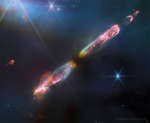 APOD: 2023 September 19 B HH 211: Jets from a Forming Star
APOD: 2023 September 19 B HH 211: Jets from a Forming Star
19.09.2023
Do stars always create jets as they form? No one is sure. As a gas cloud gravitationally contracts, it forms a disk that can spin too fast to continue contracting into a protostar. Theorists hypothesize that this spin can be reduced by expelling jets.
18.09.2023
The sprite and tree could hardly be more different. To start, the red sprite is an unusual form of lightning, while the tree is a common plant. The sprite is far away -- high in Earth's atmosphere, while the tree is nearby -- only about a football field away.
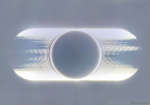 APOD: 2023 September 17 B Moon Mountains Magnified during Ring of Fire Eclipse
APOD: 2023 September 17 B Moon Mountains Magnified during Ring of Fire Eclipse
17.09.2023
What are those dark streaks in this composite image of a solar eclipse? They are reversed shadows of mountains at the edge of the Moon. The center image, captured from Xiamen, China, has the Moon's center directly in front of the Sun's center.
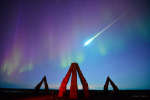 Fireball over Iceland
Fireball over Iceland
16.09.2023
On September 12, from a location just south of the Arctic Circle, stones of Iceland's modern Arctic Henge point skyward in this startling scene. Entertaining an intrepid group of aurora hunters during a geomagnetic storm, alluring northern lights dance across the darkened sky when a stunning fireball meteor explodes.
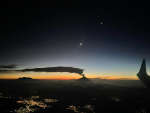 Venus, Moon, and the Smoking Mountain
Venus, Moon, and the Smoking Mountain
15.09.2023
Venus has returned as a brilliant morning star. From a window seat on a flight to Mexico City, the bright celestial beacon was captured just before sunrise in this astronomical snapshot, taken on September 12. Venus, at the upper right, shared the early predawn skies with an old crescent Moon.
 NGC 7331 and Beyond
NGC 7331 and Beyond
14.09.2023
Big, beautiful spiral galaxy NGC 7331 is often touted as an analog to our own Milky Way. About 50 million light-years distant in the northern constellation Pegasus, NGC 7331 was recognized early on as a spiral nebula and is actually one of the brighter galaxies not included in Charles Messier's famous 18th century catalog.
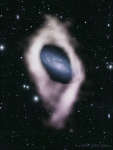 APOD: 2023 September 13 B NGC 4632: Galaxy with a Hidden Polar Ring
APOD: 2023 September 13 B NGC 4632: Galaxy with a Hidden Polar Ring
13.09.2023
Galaxy NGC 4632 hides a secret from optical telescopes. It is surrounded by a ring of cool hydrogen gas orbiting at 90 degrees to its spiral disk. Such polar ring galaxies have previously been discovered using starlight. However, NGC 4632 is among the first in which a radio telescope survey revealed a polar ring.
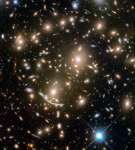 Galaxy Cluster Abell 370 and Beyond
Galaxy Cluster Abell 370 and Beyond
12.09.2023
Some 4 billion light-years away, massive galaxy cluster Abell 370 is captured in this sharp Hubble Space Telescope snapshot. The cluster of galaxies only appears to be dominated by two giant elliptical galaxies and infested with faint arcs.
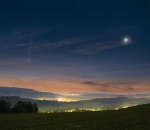 APOD: 2023 September 11 B Beautiful Comet Nishimura
APOD: 2023 September 11 B Beautiful Comet Nishimura
11.09.2023
This scene would be beautiful even without the comet. By itself, the sunrise sky is an elegant deep blue on high, with faint white stars peeking through, while near the horizon is a pleasing tan.
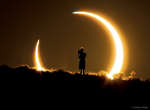 APOD: 2023 September 10 B An Annular Solar Eclipse over New Mexico
APOD: 2023 September 10 B An Annular Solar Eclipse over New Mexico
10.09.2023
What is this person doing? In 2012, an annular eclipse of the Sun was visible over a narrow path that crossed the northern Pacific Ocean and several western US states. In an annular solar...
|
January February March April May June July |
|||||||||||||||||||||||||||||||||||||||||||||||||